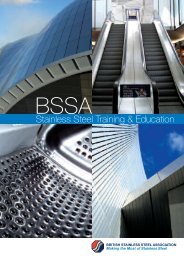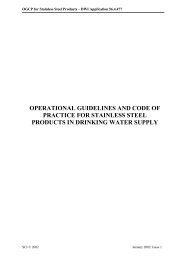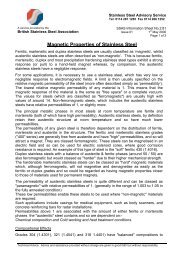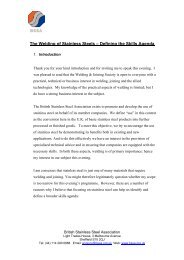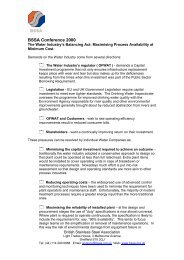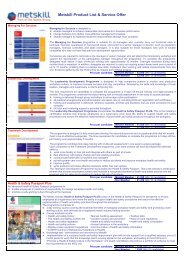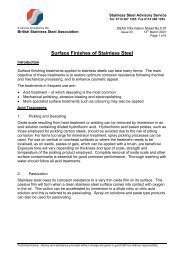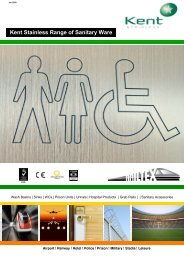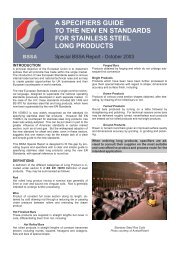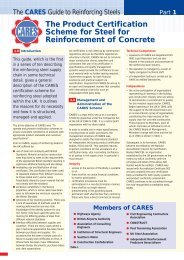Information Sheet No - British Stainless Steel Association
Information Sheet No - British Stainless Steel Association
Information Sheet No - British Stainless Steel Association
You also want an ePaper? Increase the reach of your titles
YUMPU automatically turns print PDFs into web optimized ePapers that Google loves.
Wear Coatings<br />
SSAS <strong>Information</strong> <strong>Sheet</strong> <strong>No</strong>.5.60<br />
Issue 02 12 th March 2001<br />
Page 3 of 3<br />
Improvements in both wear and galling resistance may be obtained by altering the surface<br />
characteristics of stainless steels by nitriding or chromium plating.<br />
Nitriding<br />
Austenitic stainless steels do not respond well to nitriding treatments and so the scope for<br />
nitriding is limited.<br />
Better results can be obtained on martensitic and precipitation-hardening stainless types,<br />
particularly as the "substrate" core of the steel can be strengthened. This helps support the<br />
hardened surface layer when loads are applied to mating components.<br />
There are limitations even then to the scope for nitriding, as the corrosion resistance can<br />
be reduced due to depletion of chromium at the surface as chromium nitrides are formed.<br />
Additionally there can be a risk of intergranular corrosion as the nitriding temperature can<br />
result in the precipitation of carbides at the steel grain boundaries.<br />
Hard chromium deposits are intended primarily to improve wear/galling resistance and are<br />
usually applied to directly to the substrate. The thickness of hard chromium electroplated<br />
coatings range from 0.003 to 0.5 mm, while decorative coatings seldom exceed 0.003 mm.<br />
Electrodeposited chromium is not recommended for high temperature or high-pressure<br />
applications, which tend to reduce the hardness of the coating and may lead to<br />
cracking/spalling.<br />
References<br />
1. “Review of the Wear and Galling Characteristics of <strong>Stainless</strong> <strong>Steel</strong>s”, American Iron and<br />
<strong>Steel</strong> Institute, Designers Handbook Series, April 1978<br />
2. "Long-term performance of stainless steel fasteners",<br />
K Shemwell, DR Johns, EU Commission report EUR 17848 EN, 1997<br />
3. <strong>British</strong> Standards Institution<br />
BSEN 3506:1999 - Corrosion Resistant Fasteners<br />
4.“Corrosion Resistant Duplex <strong>Stainless</strong> <strong>Steel</strong> with Improved Galling Resistance”, Magee,<br />
Jr et al, US Patent <strong>No</strong> 5,254,184, October 19, 1993.<br />
Before commencing any task ensure that you have received the appropriate health<br />
and safety literature from the supplier and fully understand it. If in doubt seek advice.<br />
This <strong>Information</strong> <strong>Sheet</strong> is based on a draft supplied by Avesta Sheffield Ltd.<br />
Technical Advice: Advice and assistance provided without charge are given in good faith but without responsibility



